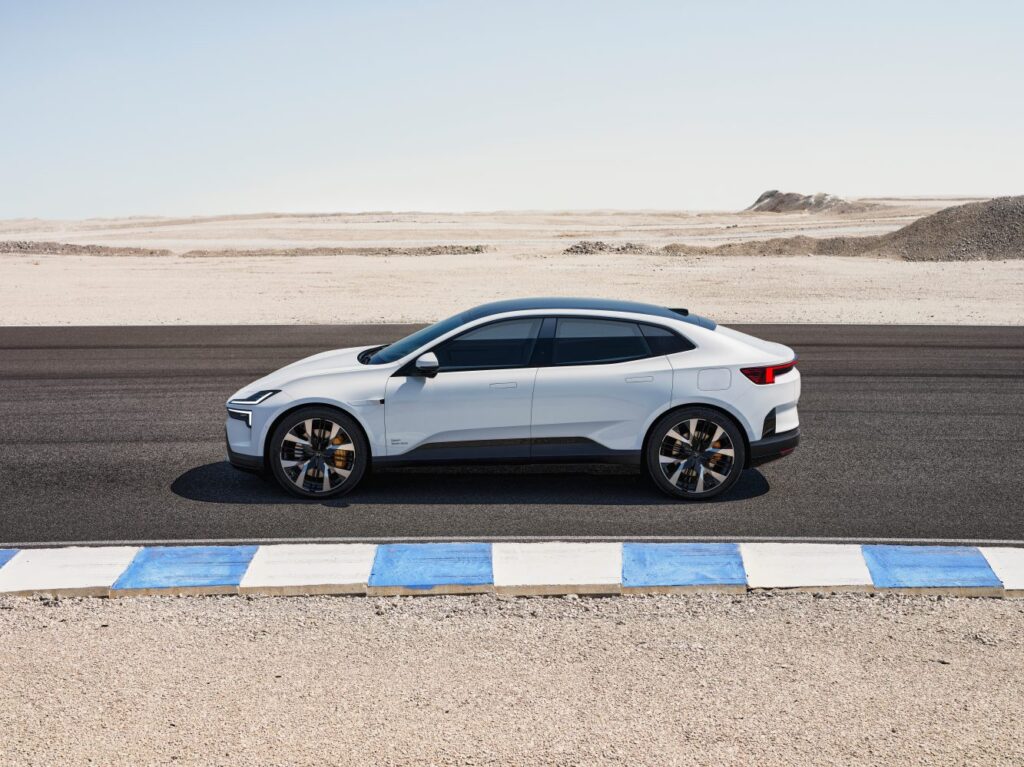
Swedish EV maker Polestar just released its first Life Cycle Assessment (LCA) for the brand’s SUV crossover Polestar 4, which the company says emits as little as 19.4 tonnes of CO2 equivalent. Made in China, the model ranks as having the smallest carbon footprint in the company’s four-vehicle lineup.
This latest assessment measures all the carbon emissions from the life cycle of the vehicle, from the production of its many components, to transport, manufacturing, and distribution, creating a figure dubbed “the most efficient model.” While the Polestar 4 will debut in China this year before expanding to other markets, the European Union has turned a sharp eye to these kinds of assessments in evaluating whether or not a car meets government EV incentives – Chinese-made models don’t usually make the cut.
However, Polestar has been putting a ton of work into slashing its carbon emissions over the years – with its ambitious goal to create a “truly climate-neutral” production car by 2030. (By comparison, the Polestar 2 from 2021 emitted 26.2 tonnes of CO2 equivalent.)
To start, the Polestar 4, is produced in Geely’s SEA factory in Hangzhou Bay, a factory that runs on 100% renewable energy, including carrying the I-RED hydro power certificate and featuring photovoltaic panels on its rooftop. Polestar says it also cut emissions on the Polestar 4 by using aluminum that has either been recycled or smelted via hydroelectric electricity to reduce pollution.
Putting it all together, Polestars says that the aluminum accounts for about 23-24% of the Polestar 4’s carbon footprint, with 20% of emissions coming from steel and iron in the car. The battery is the most pollution-emitting part of the vehicle at 36-40% of total carbon emissions.
“To support our net zero goal, we set carbon budgets for all our cars,” says Fredrika Klarén, head of sustainability at Polestar. “Throughout the product development of Polestar 4, its carbon budget has influenced everything from material choices to factory energy sources. Sharing the LCA enables us to show that we can strive for net zero – one ton of CO2e at a time.”
Polestar unveiled the Polestar 4 in April, dubbing it “an electric performance SUV coupé” and the second SUV in the brand’s lineup. The fastest production car the brand has on offer, it can sprint from 0-100 km/h in 3.8 second, with maximum power output at 400 kW (544 hp).
Both dual- and single motor versions will be available, but the single motor variant earned the top score as greenest version, while the dual motor version emits 21.4 tonnes of CO2 equivalent. Both versions feature a hefty 102 kWh battery that gives a range up to 373 miles (600 km) per charge.

Polestar 4 will launch first in China, with a full-scale rollout in other markets, including in Europe, North America, and Asia Pacific, planned for early 2024. Indicative launch pricing is from €60,000/$60,000.
Polestar plans to have a lineup of five performance EVs by 2026. Polestar 2, the electric performance fastback, launched in 2019, with the Polestar 3 in late 2022. Polestar 5, an electric four-door GT and Polestar 6, an electric roadster, are in the works.
FTC: We use income earning auto affiliate links. More.

